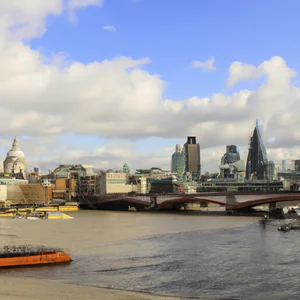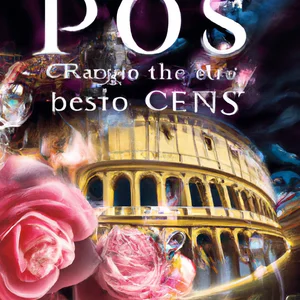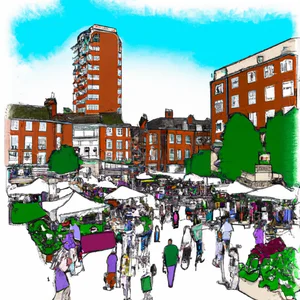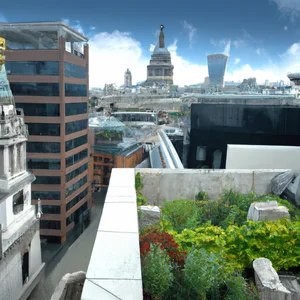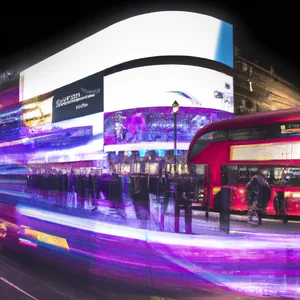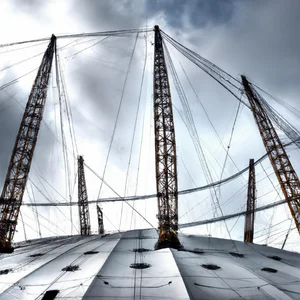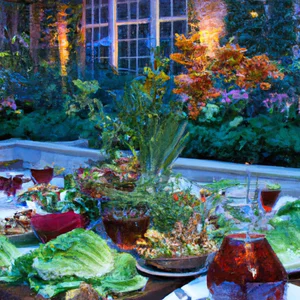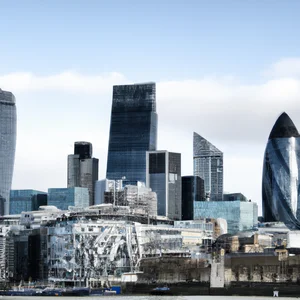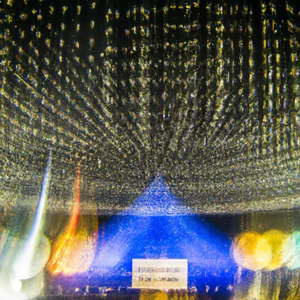Book your experience
The Walkie-Talkie: Controversy and Innovation in the Skyscraper of 20 Fenchurch Street
The Walkie-Talkie, that skyscraper that stands out at 20 Fenchurch Street, is a real mix of controversy and innovation. In short, it cannot be said that it went unnoticed! I remember the first time I saw it: I was walking around London, and suddenly, this building that seemed a bit strange, with that belly shape, struck me. It’s as if he wanted to say: “Hey, look at me!”.
The truth is that this skyscraper has sparked quite a bit of discussion. On the one hand, there are those who consider it a masterpiece of modern design, a breath of fresh air in the London landscape. On the other, there are those who see it as an eyesore, something that has nothing to do with the rest of the city. I think that, in the end, it’s a matter of taste: to me, for example, it reminds me of those hard sweets that melt in your mouth, colorful and a bit kitsch.
And then, you can’t ignore the history of heat! Yes, you understood correctly. This skyscraper caused quite a bit of trouble for the shops below, because it reflected sunlight so brightly that, at one point, someone even considered frying an egg on the sidewalk. Imagine the scene! But come on, who would have thought that a building could get noticed for something like this?
Of course, there are also positive aspects. The view from its panoramic garden is truly breathtaking. And who doesn’t love a little green amidst all that grey? When I went there, I felt like a kid on a playground. In short, the Walkie-Talkie is a bit like a book that arouses different opinions: there are those who love it and those who hate it, but it certainly doesn’t leave you indifferent.
Ultimately, it is a clear example of how architecture can be both a blessing and a curse, depending on your point of view. I’m not sure, but I think that, ultimately, London needs buildings like this to stay alive and vibrant, even if a little questionable, you know, like a plate of food that you don’t know if you’ll like or not!
The Walkie-Talkie controversy: a divisive skyscraper
A personal anecdote
I remember my first encounter with the skyscraper of 20 Fenchurch Street, known as the Walkie-Talkie. Walking along the historic streets of London, I found myself faced with this imposing structure, its distinctive form seeming to defy architectural conventions. Reactions vary: some love it, others hate it. But what is striking is the energy surrounding this controversy. While some passers-by stopped to take photos, others shook their heads with expressions of disapproval. This discord has sparked heated debates about the beauty and integrity of London’s landscape.
Practical information
Inaugurated in 2014, the Walkie-Talkie has attracted controversy since its conception. Designed by Rafael Viñoly, the skyscraper has been criticized for its “belly” shape and its impact on the cityscape. The controversy grew further when, during hot summer afternoons, solar rays reflected from its facade caused damage to vehicles parked below, giving rise to the nickname “sunfire”. According to an article in the Guardian, the architect justified the unique design by claiming that he wanted to maximize green space and natural light.
An insider tip
If you want an experience that goes beyond just skyscraper gazing, take a tour of the nearby St. Dunstan in the East Garden. This enchanting green space, located just steps from the Walkie-Talkie, is a tranquil retreat that offers astonishing views of the fusion of nature and architecture. Here, away from the hustle and bustle of the city, you can reflect on the controversy surrounding this skyscraper while enjoying a moment of peace.
Cultural and historical impact
The Walkie-Talkie isn’t just a building; it is a symbol of the tension between innovation and tradition in London architecture. Its presence has raised questions about how new construction can coexist with the city’s historic heritage. While some argue that it contributes to a modern and dynamic cityscape, others see its unusual shape as a violation of London’s traditional aesthetic. This debate reflects a wider struggle to define the architectural identity of the British capital.
Sustainability and responsibility
In an era where sustainability is crucial, the Walkie-Talkie has also sought to address these concerns. The skyscraper is equipped with a highly efficient heating and cooling system and uses emissions-reducing technologies. This sustainable approach, while controversial in terms of design, offers a model for how even the most innovative structures can contribute to a greener future.
A final reflection
Looking at the Walkie-Talkie, one may ask: is it really an architectural monster or a symbol of progression and innovation? The key is in how we perceive change. The controversy surrounding this skyscraper invites us to reflect on what we want our urban landscape to look like. What is your point of view? Are you more inclined to embrace the new or protect the old? The answer could reveal a lot about your personal worldview.
Architectural innovation: unique design and functionality
A personal experience
I vividly remember my first encounter with the Walkie-Talkie, the skyscraper that stands tall among the classic buildings of London. As I approached 20 Fenchurch Street, I was struck by its distinctive silhouette and the curiosity it aroused in the faces of passers-by. The “walkie-talkie” shape, with its planes that widen upwards, is a perfect example of architectural innovation. It almost seems as if the building is communicating with the sky, a bold gesture that has divided opinions among architects and citizens.
Design and functionality
The Walkie-Talkie is not only a meeting of bold geometry, but also an engineering achievement with cutting-edge functionality. Designed by Rogers Stirk Harbor + Partners architecture firm, the skyscraper offers modern, cutting-edge office space, with a focus on occupant well-being. The large windows not only provide natural light, but also offer panoramic views of the London skyline.
An often overlooked feature is its natural ventilation system, which reduces energy needs. This sustainable approach aligns with responsible tourism practices, inviting visitors to consider the importance of environmentally friendly buildings.
Unconventional advice
If you really want to understand the essence of Walkie-Talkie’s innovative design, I recommend you visit the Sky Garden during sunset time. While many flock to the best-known viewpoints, here you will have the opportunity to enjoy a cocktail while watching the sun go down, creating a magical atmosphere, far from the crowds.
The cultural impact
The Walkie-Talkie has undoubtedly left an indelible mark on London’s architectural culture. Its controversial form has inspired discussions about the future of urban architecture, raising questions about how buildings can integrate aesthetics and sustainability. Furthermore, the skyscraper has stimulated the rebirth of the surrounding area, helping to grow the number of cultural events and public spaces.
Personal reflection
As I admired the view from the top of the Walkie-Talkie, I couldn’t help but think about how divisive modern architecture can be. Opinions may vary, but what is indisputable is how buildings like this can transform the perception of a city. What is your opinion on innovation architectural? Are you ready to discover the bolder side of your city?
Panoramic experience: the Sky Garden not to be missed
An anecdote that will take you to the top
I remember the first time I set foot in the Sky Garden of the Walkie-Talkie. The elevator which rises very quickly and almost silently takes visitors to a height of over 150 metres, offering a breathtaking view which is revealed as it approaches the top. When the doors opened, I found myself in a lush garden, surrounded by a view that takes in the River Thames and London’s iconic landmarks. It was like entering a dream, where the green blends with the gray of the city, creating a fascinating contrast.
Practical information
The Sky Garden, located on the 35th floor of 20 Fenchurch Street, is accessible for free, but it is advisable to book in advance to avoid long waits. Opening hours are generally from 10:00 to 18:00, but it is possible to enjoy evening openings for special events. For more details and reservations, you can visit the official Sky Garden website.
An insider tip
If you want to have a unique experience, I recommend visiting the Sky Garden at sunrise. The morning light reflecting off the Thames offers a lovely view and the chance to take stunning photos without the afternoon crowds. Bring a light breakfast and enjoy the tranquility of the garden as London awakens around you.
Cultural and historical impact
The Sky Garden represents an extraordinary example of how modernity can integrate with nature. It not only offers a green space in an urban context, but also serves as a meeting point for cultural and artistic events, contributing to an ongoing dialogue between history and innovation. Its existence has stimulated greater awareness of the value of green spaces in the city and the need to design buildings that are not only functional, but also sustainable.
Sustainability and responsibility
The Walkie-Talkie is a model of architectural sustainability; its innovative design takes advantage of natural light and reduces energy consumption. The garden itself is designed to accommodate native plants that require little maintenance and water, thus contributing to urban biodiversity. Promoting responsible tourism is essential here: each visit supports local initiatives to maintain and improve green spaces.
An experience not to be missed
Don’t miss the opportunity to sip a cocktail at the Sky Garden bar while enjoying the sunset. This experience is not just a way to relax, but allows you to experience the city from a unique perspective, surrounded by an atmosphere that mixes elegance and informality.
Myths and misconceptions
One of the common misconceptions regarding the Sky Garden is that it is exclusive or reserved only for luxury visitors. In fact, it is a place accessible to all and offers a range of activities, including free events and workshops, making it a point of reference for anyone who wants to explore the green aspect of London.
Final reflection
Next time you find yourself near the Walkie-Talkie, ask yourself: How can a simple garden help transform the vision of a city? The Sky Garden is more than a viewing point; it is an invitation to reflect on our relationship with the urban environment. Are you ready to discover the beauty that lies above the daily chaos?
Hidden History: The Past of 20 Fenchurch Street
When I visited London for the first time, I found myself in front of the 20 Fenchurch Street skyscraper, also known as the Walkie-Talkie, and its bizarre silhouette immediately fascinated me. As I gazed at its distinctive architecture, a local resident approached me, telling me forgotten stories of the place. Once upon a time, this area was a pulsating commercial hub, full of life and activity. The transformation of the site from a commercial exchange area to an iconic skyscraper has profound significance, not only for the city’s architecture, but also for the communities that live there.
A journey through time
20 Fenchurch Street stands on land which has seen significant architectural evolution over the centuries. Before the construction of the Walkie-Talkie, this area was dominated by historic buildings, including the historic 15th-century St. Andrew Undershaft Church. Today, as the skyscraper stands proud, remnants of that past can still be felt in the surrounding streets, where independent shops and cafés tell stories of a bygone era.
Unconventional advice
A secret that only true insiders know: head to the small public garden of St. Andrew Undershaft, just a few steps from the skyscraper. Here, in addition to enjoying the tranquility, you can admire from a unique perspective how the Walkie-Talkie stands out against the sky. It’s a peaceful corner in an area that can seem chaotic, an opportunity to reflect on the connection between London’s past and present.
Cultural and historical impact
The construction of the Walkie-Talkie generated lively debates about the future of London architecture. While some see it as a symbol of innovation, others see it as an intrusion into the city’s historic landscape. This skyscraper is not just a place of work, but a point of reference that invites us to reflect on the direction the city is taking. Its presence has also stimulated a renewed interest in preserving the surrounding historic buildings, creating a dialogue between modernity and tradition.
Sustainability and responsibility
In an age where sustainability is key, 20 Fenchurch Street is an example of how modern architecture can integrate with eco-friendly practices. The skyscraper is equipped with advanced energy saving systems and hosts green spaces, helping to improve air quality in the area. In this context, the Walkie-Talkie is not only a symbol of progress, but also an example of how cities can evolve responsibly.
An activity worth trying
To immerse yourself even further in the history of 20 Fenchurch Street, I recommend taking one of the guided tours organized by the City of London Corporation. These visits offer an in-depth look at the history of the skyscraper and the surrounding area, highlighting details that often escape most. You will thus be able to appreciate not only contemporary architecture, but also the historical roots that support it.
Myths and misconceptions
It is often thought that the Walkie-Talkie is just a soulless modern building, but in reality it is a symbol of how the city is trying to integrate its history with the future. This skyscraper is not just a work of architectural art; it is a meeting point between different eras and cultures, a place that continues to tell stories of change and innovation.
Final reflection
As you gaze at the Walkie-Talkie standing majestically, I invite you to consider: How can such a modern building coexist with the stories of the past? This fusion of eras is what makes London so unique, and every visit is an opportunity to discover something new. What stories would the city tell you if it could talk?
A local perspective: residents’ stories
A tale from the heart of London
Strolling along the pavement of Fenchurch Street, the Walkie-Talkie skyscraper stands like a colossus of glass and steel, but what is most striking is not just its distinctive architecture, but the stories of the residents who live nearby. During one of my visits to London, I was lucky enough to meet Mrs. Thompson, a lively octogenarian who has lived in the neighborhood for decades. She told me how the Walkie-Talkie transformed the urban landscape, bringing with it a mixture of emotions: from admiration for architectural innovation, to concern for gentrification and changes in the community.
Daily life between stories and architecture
Residents of this area, like Mrs. Thompson, experience a constant contrast between modernity and tradition. While some see the Walkie-Talkie as a symbol of progress, others lament the loss of small, historic shops and a sense of community. The often overlooked stories of these residents offer an authentic insight into London life, revealing a more human and complex side of the skyscraper.
- Type of residence: Historic apartments can be found next to new modern lofts, creating a unique mix of living styles.
- Local activities: The inhabitants love to meet at the weekly markets, where the stalls selling fresh products tell stories of local artisans.
An insider tip
If you want to immerse yourself in local culture, don’t limit yourself to just visiting the Sky Garden. Take time to explore the nearby Leadenhall Market Gardens, a picturesque corner where artisans and traders tell stories spanning generations. Here, you can enjoy a delicious afternoon tea in one of the historic cafés, an experience that will allow you to breathe in the authentic atmosphere of the neighborhood.
Cultural and historical impact
The Walkie-Talkie is not just a skyscraper, but a landmark that has stimulated debates on urban planning and sustainability. Its construction has generated discussions about how new structures can coexist with London’s historic heritage. This dialogue between ancient and modern is essential to understanding the evolution of the city.
Sustainable tourism practices
Many residents are active in promoting sustainable tourism practices. For example, there are local initiatives to encourage visitors to use environmentally friendly modes of transport, such as bicycles and public transport, to reduce environmental impact. Furthermore, local markets support the purchase of zero km products, contributing to a more sustainable economy.
An experience not to be missed
Don’t miss the opportunity to take a guided tour that includes tales of local lives and their connections to the Walkie-Talkie. These tours, often led by resident guides, offer a unique and in-depth perspective on how this skyscraper has influenced the community.
Exposing myths and misconceptions
A common myth is that central London residents are all young professionals. In reality, the community is much more heterogeneous and includes families, elderly people and artists, each with their own story to tell. It is important not to fall into the trap of a stereotypical vision of life in the city.
Final reflection
As you watch the Walkie-Talkie rise into the London sky, ask yourself: what stories lie behind its towering glass walls? The next time you are in this area, take a moment to listen to the voices of the residents, because the true essence of a place is often found in the stories of those who live there every day.
Sustainability in architecture: the Walkie-Talkie model
An unexpected encounter with sustainability
I still remember the day I found myself walking near the Walkie-Talkie. As I admired its distinctive silhouette, a passerby approached me and started telling me how innovative it was from a sustainability perspective. I never imagined that such a controversial skyscraper could be an example of eco-friendly architecture. Its design, signed by architect Rafael Viñoly, includes a series of features that not only reduce environmental impact, but also offer food for thought on how we can build a more sustainable future.
Sustainable Walkie-Talkie Features
Located at 20 Fenchurch Street, the Walkie-Talkie is equipped with an advanced energy management system that optimizes energy consumption, reducing CO2 emissions. The skyscraper’s curved facades not only create a unique look, but also allow for better air circulation and more natural light in the interior spaces. A distinctive element is the suspended garden, the Sky Garden, which not only offers a green space amidst the concrete jungle, but also contributes to the improvement of urban biodiversity.
An insider tip
If you want to explore the sustainable aspect of the Walkie-Talkie, don’t just visit the garden. Join one of the organized tours that focus on sustainability in architecture. These tours, led by local experts, offer a unique opportunity to understand how modern architecture is addressing environmental challenges.
The cultural impact of the Walkie-Talkie
The Walkie-Talkie has sparked significant debate about its presence in the London landscape. While some consider it a symbol of eco-sustainable innovation, others see it as an intruder into the architectural context of a historic area. However, what is undeniable is its role in promoting a broader conversation about sustainability in architecture, a topic that is becoming increasingly relevant in our contemporary world.
Responsible tourism practices
When visiting Walkie-Talkie, consider using public transportation to reach the area. London has an excellent public transport system which reduces the environmental impact of tourism. Furthermore, you can contribute to local conservation initiatives, which aim to preserve the urban environment and biodiversity.
An experience not to be missed
Don’t miss the opportunity to sip a coffee at the Sky Garden. Surrounded by nature and surrounded by breathtaking views, it is the ideal place to reflect on sustainable architecture while enjoying the panorama of London.
Myths and misconceptions
A common misconception is that the Walkie-Talkie is an exclusively modern skyscraper with no connection to the past. In fact, its design integrates into an urban context that reflects London’s history, demonstrating that sustainability and tradition can coexist in harmony.
A final reflection
As I contemplated the beauty of the Walkie-Talkie, I realized how important it is to consider architecture not only as an aesthetic issue, but also as an opportunity to contribute to a greener future. What role do you think sustainable architecture can play in shaping the cities of tomorrow?
Cultural events: the skyscraper as a stage
Imagine finding yourself in the beating heart of London, surrounded by skyscrapers that stand like sentinels of progress. It’s a spring morning and, as I approach the Walkie-Talkie, I notice a group of street artists performing a vibrant dance in the shadow of this famous skyscraper. Their energy is contagious and reminds me how the Walkie-Talkie is not only an architectural icon, but also a living stage for cultural events that enliven the city.
A stage for creativity
The Walkie-Talkie, officially known as 20 Fenchurch Street, regularly hosts cultural events ranging from art exhibitions to musical performances. In particular, the Sky Garden, located on the 35th floor, often transforms into a temporary art gallery, where local artists exhibit their works. These events offer a unique opportunity to immerse yourself in the London art scene, in direct contact with the creations of emerging talents.
Practical information
If you wish to attend a cultural event, I recommend you check the Sky Garden’s official website for the latest news on exhibitions and concerts. The events are generally free, but it is It is advisable to book in advance as places can fill up quickly. Don’t forget to also check out the special activities during the holidays, such as Christmas markets or summer concerts.
Insider tip
A little-known tip: many events at the Sky Garden are accompanied by tasting sessions of local wines or typical British food. These dining experiences offer not only a taste of local gastronomy, but also the opportunity to mingle with artists and other participants. Don’t miss the opportunity to participate in one of these special evenings, where food and culture come together in a festive atmosphere.
The cultural impact
The Walkie-Talkie has revolutionized the concept of the skyscraper in London, not only for its distinctive design, but also for the role it plays as a cultural hub. Before its construction, the area was predominantly commercial, but has now become a hub for events celebrating London’s creativity. This change has attracted a diverse audience, contributing to a sense of community that goes beyond the walls of the skyscraper.
Sustainability and responsibility
In an age where sustainability is key, Walkie-Talkie is committed to reducing its environmental impact. Cultural events often include eco-friendly practices, such as using recyclable materials and offering organic food. Participating in these events also means supporting responsible tourism, which enhances the environment and local culture.
An experience not to be missed
While enjoying the panoramic views from the Sky Garden, don’t forget to stop and explore the art installations that adorn this unique space. You may also meet local artists sharing their stories and inspirations.
Myths and misconceptions
A common misconception is that the Walkie-Talkie is an exclusive place reserved for VIPs only. In reality, cultural events are open to all and aim to make art and culture accessible to the public. This democratizes the cultural experience, allowing anyone to participate and contribute to the vibrancy of London.
Personal reflection
Walking among the artistic installations and listening to the notes of a guitar, I ask myself: how can we all contribute to making our cities not only places of work, but also spaces of creativity and meeting? Next time you visit Walkie-Talkie, take a moment to reflect on the importance of culture in urban life. And you, which cultural events struck you most in your city?
Unusual curiosities: the facade and the solar “focus”.
I remember the first time I visited London and, walking along Fenchurch Street, I came across the Walkie-Talkie. Its distinctive silhouette, rising towards the sky, struck me immediately. However, what caught my attention was not only its bold design, but also the way the sun reflected off its curvilinear façade, creating an almost hypnotic effect. But it wasn’t until shortly afterward that I learned about the controversy surrounding this phenomenon: solar reflection so intense that it causes damage to cars parked nearby, melting parts of them.
An architecture that surprises and divides
The Walkie-Talkie, with its glass covering that captures light spectacularly, has become a symbol of architectural innovation. However, its facade has raised important questions about the responsibility of architects to design buildings that are not only aesthetically pleasing, but also safe for the public and the surrounding environment. This solar “fire” has led to a series of criticisms, but also to a deeper analysis of how innovation can have unexpected consequences.
A little-known tip
If you want a unique experience related to this phenomenon, I recommend you visit the Walkie-Talkie at sunset time. Not only will you have the opportunity to see the sun reflect in amazing ways, but you will also be able to take in the views from one of the highest points in London. And if you have some time, try taking a walk around the area to observe the reactions of passers-by when the sun hits the facade — it’s a moment worth capturing!
Cultural and historical impact
The topic of solar reflection has sparked heated debate in the architectural community and among London residents. This episode pushed designers to consider more carefully the environmental and safety implications of their works. The Walkie-Talkie, therefore, is not just a skyscraper; has become a case study in the balance between aesthetics and responsibility.
Sustainable tourism practices
Visit Walkie-Talkie responsibly. Choose to use public transport to reach it, thus helping to reduce the environmental impact of your trip. Additionally, explore the Sky Garden, which not only offers breathtaking views, but is also an example of green space integrated into an urban context.
An experience not to be missed
Don’t miss the opportunity to visit the Sky Garden inside the Walkie-Talkie. Here you can stroll through lush gardens and enjoy unrivaled panoramic views of London as the sun sets gently over the horizon.
In conclusion, the Walkie-Talkie invites us to reflect: how far are we willing to go in the name of innovation? It is essential to consider the consequences of our architectural choices and how these influence not only the urban landscape, but also the lives of the people who inhabit it. What are your thoughts on this controversial skyscraper?
Unconventional Tips: Explore the surroundings of the skyscraper
I remember my first encounter with the Walkie-Talkie: after admiring its distinctive shape and the panoramic garden, I decided to explore the surroundings. As I ventured into this part of London, I discovered that there is much more than the skyscraper. I was following my instincts, but this is where I found some hidden gems that only the locals know about.
Small oases in the heart of London
Not far from the Walkie-Talkie, is Leadenhall Market, a historic market that dates back to the 14th century. Its colorful Victorian structures and quaint shops create a lively and welcoming atmosphere. Here, you can enjoy a delicious meat sandwich or simply stroll through the boutiques. Many tourists don’t realize that, just a few steps from the skyscraper, there are picturesque spaces where history meets modernity.
Another unmissable discovery is St. Dunstan in the East, a church destroyed during the Second World War and transformed into a public garden. This corner of tranquility is perfect for taking refuge from the bustle of the city and enjoying a moment of peace. It’s a place where nature and history intertwine, and where Londoners come together for a break.
An insider tip
If you want a truly unique experience, I recommend visiting the Sky Garden at sunset. This rooftop garden is not only a place to admire the view, but also a meeting point for cultural events and live performances. Many do not know that access is free, but it is essential to book in advance, as places fill up quickly. Make sure you bring a camera, because the view of the illuminated city is simply breathtaking.
Cultural impact and historicity
The area around the Walkie-Talkie is rich in history, and walking through the narrow streets overlooking the River Thames you can sense the evolution of London over the centuries. From the medieval architecture of the markets to the contemporary skyscraper, every corner tells a story. This mix of ancient and modern is what it makes London such a fascinating and dynamic place.
Sustainability and responsible tourism
In an age where sustainability is key, it’s interesting to note that the Walkie-Talkie has been designed with an eye on the environment. The panoramic garden is not just a tourist attraction, but an example of how green spaces can be integrated into urban architecture. Walking around, you may also notice local initiatives to promote eco-friendly practices, such as organic markets and shops selling items with low environmental impact.
A final reflection
Next time you visit Walkie-Talkie, stop and explore its surroundings. London is a city that reveals itself only to those willing to look beyond the most famous attractions. What other hidden places would you like to discover in this pulsating metropolis? The true beauty of London lies in its continuous dialogue between the past and the present, and every corner has something to teach us.
Local gastronomy: where to eat near the Walkie-Talkie
A personal experience
I still remember my first visit to the Walkie-Talkie, a skyscraper that, with its distinctive shape, stood like a giant in the heart of London. After admiring the breathtaking view from the Sky Garden, my stomach started to growl, calling me back to reality. It was then that I discovered a small restaurant a few steps from the skyscraper, a place that would become my favorite corner to enjoy local cuisine.
Practical information
If you’re looking to delight your taste buds in the Walkie-Talkie area, you can’t miss Petersham Nurseries. This restaurant, located within walking distance, is famous for its seasonal menu that celebrates fresh British flavours. To enjoy an outdoor lunch surrounded by nature, I recommend booking a table in their garden. Always check the official website for any updates on the menu and special offers.
Unconventional advice
A tip that few people know is to visit Borough Market, just 15 minutes from Walkie-Talkie. This market is a food lover’s paradise, where you can savor local and international specialties. Try artisanal cheese from Kase Swiss or gourmet sandwiches from Bread Ahead. It’s a perfect option for a casual lunch, and it’s also an opportunity to discover London’s gastronomic history.
The cultural impact
The gastronomy in the Walkie-Talkie neighborhood reflects the multiculturalism of London. Restaurants and markets like Borough offer dishes from around the world, celebrating the influence of different communities. This culinary melting pot not only enriches the gastronomic experience but also tells the story of the city and its evolution over the years.
Sustainable tourism practices
Many restaurants near Walkie-Talkie are committed to sustainability. Petersham Nurseries, for example, uses organic and local ingredients, helping to reduce environmental impact. When choosing where to eat, try to opt for restaurants that adopt sustainable practices, such as the use of 0 km products.
A vibrant atmosphere
Imagine sitting in a restaurant overlooking the Thames, with the sun streaming through the trees and the scent of fresh herbs filling the air. The atmosphere is lively and welcoming, with the sounds of conversations mixing with the sound of crockery. It is in these moments that the magic of London is revealed in all its beauty.
An experience worth trying
Don’t miss the opportunity to take part in a food tour around the Walkie-Talkie, where you can taste typical dishes and discover the culinary history of London. Several companies offer guided tours that will take you to the most iconic restaurants and markets.
Myths to dispel
A common misconception is that street food in London is of poor quality. In fact, many of the best flavors can be found in markets and food stalls, where talented chefs experiment with fresh and creative ingredients. Don’t be fooled by prejudices!
A final reflection
After exploring gastronomy around the Walkie-Talkie, I invite you to reflect on how food can be a gateway to culture. What dish surprised you the most during your culinary adventures? Next time you visit London, be amazed by the gastronomic delights that await you!

 Architecture and Design
Architecture and Design Cities and Regions
Cities and Regions Culture and History
Culture and History Events and Festivals
Events and Festivals Fashion and Shopping
Fashion and Shopping Food and Wine
Food and Wine Nature and Adventure
Nature and Adventure Unique Experiences
Unique Experiences


















